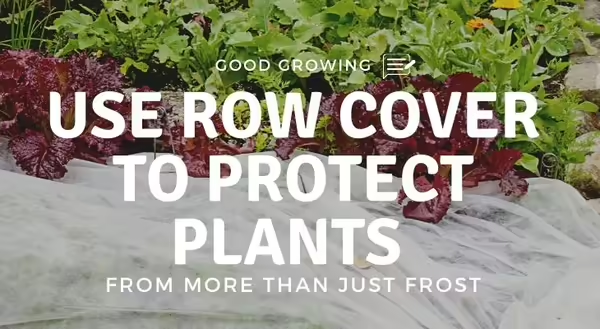
It feels like spring has sprung and boy it sprang hard. Several days above 60 and 70 degrees has pushed growth in many early perennial plants. Buds on trees and shrubs are swelling ready to pop at a moment’s notice. Many cool-season vegetables have put on significant growth. But soon we will likely be back to more seasonable spring weather. Chilly, rainy, and mud everywhere.
Manage spring temperature swings
In the spring and fall, gardeners become highly tuned to weather forecasts. As we transition from winter to summer, swings in temperature can bring us above and below freezing for several weeks. Many gardeners must be prepared to deploy plant-saving protection by covering plants during freeze events.
Cover Plants During Freezes/Frosts
Recycle a milk jug: Plant coverings can be as simple as the top of a milk jug with the bottom removed, placed over a tender vegetable or flower. If you’re not a milk drinker, but would like to find these online the technical term for this device is “cloche.”
Bedsheets: As a kid I recall my parents having a stack of old bedsheets that would hurriedly get draped over plants and garden beds as cloud-free nights brought frost the following morning.
Fall leaves: We would also grab armfuls of leaves to pile on garden beds when we ran out of bedsheets.
Row cover fabric: If you are not willing to sacrifice your bedsheets, there is a versatile material called row cover fabric that is used in the same way, but this product is made to cover and protect plants in the garden. Row cover is a white-colored fabric created with thin spun plastic fibers. It can be purchased in rolls that are 20 feet long to hundreds of feet long and usually span 10-feet wide. Row cover comes in different densities. Some are very lightweight, while others are a bit more heavy-duty.
Other benefits of row cover
Row cover goes beyond protecting plants from frost. A benefit to row cover is it lets light through, significantly more than a bedsheet. This allows gardeners to grow some crops beneath row cover.
Insect protection: Row cover is often installed on frames over top vegetables like broccoli, kale, or Swiss chard to protect from leaf-feeding insects. Because these crops don’t require pollination for harvest, we don’t need to worry about getting pollinators to the flowers. This can reduce the use of insecticides needed to grow these crops. Row cover can also be installed temporarily over flowering fruit crops like squash but removed once flowering begins.
Wind protection: For locations protected from wind, you can place row cover over sturdy wire hoops. In areas that get lots of wind, more substantial frames can be bent out of 10-foot-long metal EMT conduit These structures are called "low tunnels." Check out my video below on how to make your own low tunnel. Many garden retailers sell different kits or versions of low tunnels.
Another added benefit to row cover is that it's porous and will let air and moisture through. Some gardeners will use plastic film, which works well during much colder weather, however, plastic can hold excess heat on sunny days. This means the gardener will need to go out and vent beds covered with plastic sheets on sunny days.
One drawback is row cover can be a delicate material. It may tear easily if it gets snagged on something when moving it around the garden. The wind is not your friend and pinning down the edges of the row cover is necessary. Even further, I install stakes at both ends of the row cover and tie the ends to the stakes. Despite all this, I have used the same roll of row cover for years. It may get dirty and muddy, but rain usually rinses off the grime and they continue to protect my plants.
Like most gardeners, you probably have plants to protect this spring and if you’re unwilling to sacrifice your 1,000 thread count bed sheets, consider row cover fabric.
Good Growing Tip of the Week: While row cover can be laid directly on top of plants, frames (also known as hoops) to drape your row cover on allows an air gap between the plant canopy and cover which gives extra insulative value and better frost protection.
Want to get notified when new Good Growing posts are available? SIGN UP HERE!